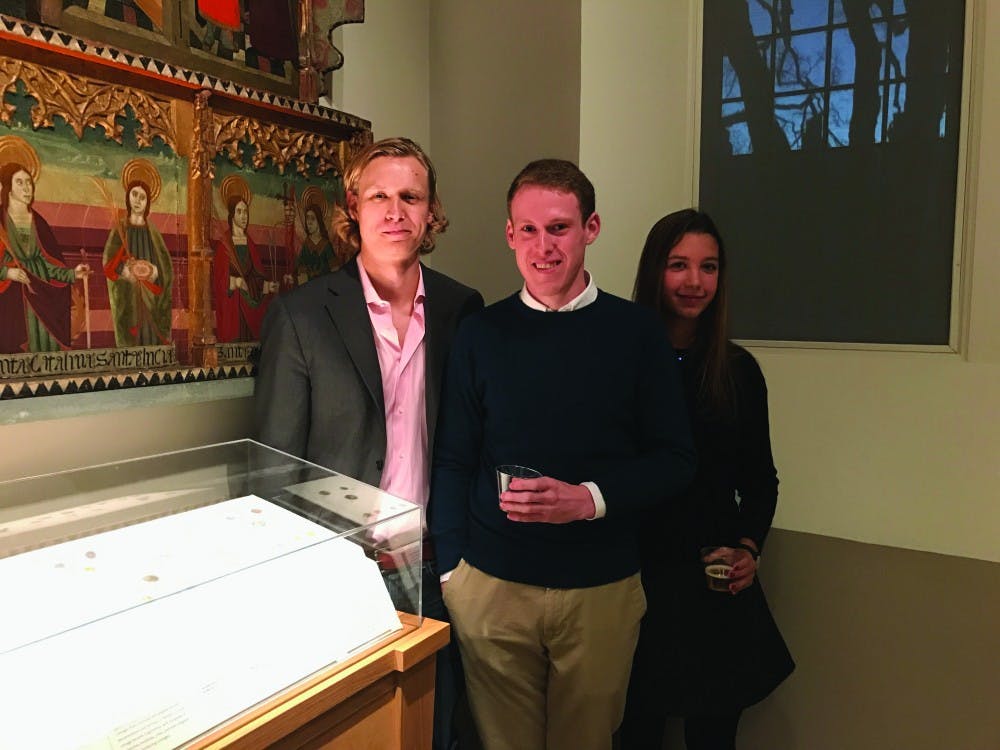Members of the Princeton University Art Museum Student Advisory Board opened a permanent collection of ancient and medieval coins at the museum.
The collection emphasizes the importance of numismatics and reflects the University’s extensive collection of coins, Dr. Alan Stahl, the University curator of numismatics, said.
The SAB consists of students dedicated to promoting student involvement at the museum. Three undergraduate students, Daniel Elkind ’17, Constantin Weickart ’17, and Hannah Baumann ’18 led the effort to create a more extensive gallery of coins at the library.
“I got interested in coins through courses in Late Antiquity, and basically all my professors used coins in their lectures,” Weickart said. “I saw how important coins are not only as objects but also as historical sources. Princeton has one the best coin collections in the world.”
The University possesses over 110,000 coins in its collection, including coins, tokens, paper money, metals, and decorations, according to Stahl. This means the University has the largest coin collection of any university in the country.
The proposal to have more coins on permanent display was brought up in early 2015 by Elkind, Weickart, and Baumann. They brought the proposal to Stahl, and the suggestion was followed by yearlong, back-and-forth work with the art museum to bring the proposal to fruition, according to Weickart.
“We went back to Dr. Stahl and formulated the list of coins that we wanted to use. We decided on what were some of the narratives we wanted to show, what were some of the images we wanted to compare,” said Baumann. “We were in charge of writing the label and content. Even though they’re so short, they are so difficult because they have to contain within it so much information.”
The coins were obtained through several different sources. Many of the coins have been donated by alumni to both the museum and Firestone Library while other coins have been purchased by the University for scholarly purposes, according to Stahl.
The Art Museum only displayed a handful of Byzantine coins in its collection, Weickart said. The new exhibit will showcase a wide-ranging collection of ancient and medieval coins from the 6th century BCE to 1400 AD.
“[The coin collection] is there primarily for educational use. A lot of classes visit the coin collection during the course of the year,” Stahl said. “Students come to do research for term papers or get images of coins to use in presentations.”
Stahl added that the exhibit is also open to outside scholars for their research, especially since the coin collection will not be part of the rotating exhibit hall but part of the permanent display.
“As a classics major, I want to get people excited about the ancient world, not just the literature, but also how multifaceted and interdisciplinary the study of classics can be,” Baumann said.
Elkind said that there are several things that viewers of the exhibit can take away from it, including the unique aesthetic value offered by the coin collection.
Elkind is a member of the Editorial Board of the Daily Princetonian.
“[The coins] are really nice. They’re like sculptures and a genuine work of art. Some of them display the most impressive example of portraiture,” he said.
Elkind added that the historical value of these coins are extensive. He explained that many emperors, like Heraclius in the 7th century, used coins as a way to stabilize imperial succession and assert dominion over people.
Baumann said that the next goal for her is to promote the new exhibit and to spread word about the new coin exhibit.
“It’s unbelievable how one object could have so much historic importance. It’s utterly fascinating how much history can be in one single object,” Weickart said.





